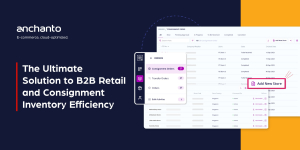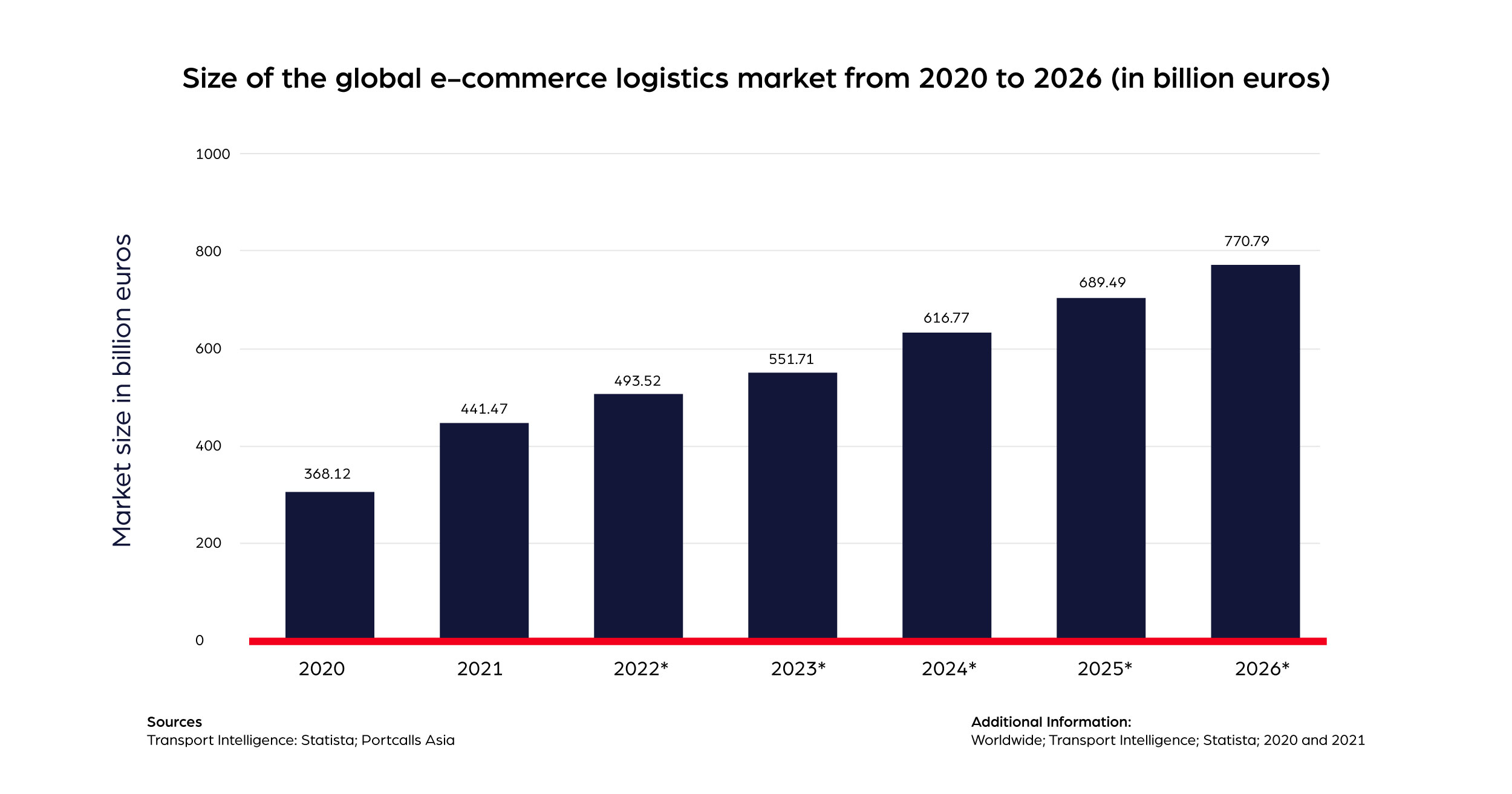
Why 3PLs Struggle with Digital Transformation and What it Takes to Succeed
1. Introduction
Much like a ship’s crew relies on effective tools for navigating shifting tides, success in the logistics industry hinges on the skillful use of efficient systems. The powerful winds of e-commerce have surged, reshaping expectations for the logistics sector. However, adapting to these new demands poses a challenge to traditional 3PL models, which lack the necessary instruments to navigate evolving requirements.
But why are traditional models falling short?
The simple answer is that they have not gone completely ‘digital’ yet.
According to a report [1], approximately 67% of shipping and logistics firms claim to have a formal digital transformation strategy in place to actively digitize their business processes. 31% say they are evaluating such a plan and 3% say they do not have a digital transformation strategy in place.
As we venture into an era where digitalization is paramount, 3PLs must undergo a digital transformation. The stakes are high, with the global e-commerce logistics market projected to reach a staggering €770.8 billion by 2026 [2]. This growth is fueled by the evolving consumer lifestyle, which increasingly favors the convenience offered by e-commerce.
Emerging trends such as social commerce, chat commerce, video commerce, and live commerce have captivated online shoppers, driving demand to unprecedented levels. While this surge in e-commerce is promising, it poses significant challenges for 3PLs. Complex customer demands, escalating costs, and heightened competition are placing strains on traditional logistics models.
In the face of these challenges, embracing digital transformation emerges as the need of the hour for 3PLs. But a successful transformation is proving difficult for many.
As a third-party logistics (3PL) provider adapting to the demands of the e-commerce industry, do you find yourself in the same situation?
2. Why 3PLs Struggle to Transform Digitally
Going digital is not just a strategic move for your business today, it is an imperative decision. Digital transformation is the key to efficiency, staying competitive, and meeting the evolving demands of the industry.
Given the rising demand for 3PLs, their logistic costs are expected to reach US$ 13.60 trillion in 2028 [3], potentially depicting how much the 3PL market can grow. But that means competition will also increase. To stand out, going beyond conventional approaches is crucial to deliver something truly distinctive.
Brands and retailers also have rising expectations when working with you. For example, visibility and scalability are expected but also the best shopping journey for the end customer and the latest technology for fast and error-free order fulfillment.
This can all be addressed through a digital transformation, but the journey to digital success is often disrupted by these self-imposed obstacles:
- No focus on skill development: According to a PwC Survey [4], more than two-thirds of respondents expect that digitizing their supply chain will require some upskilling of employees. But surprisingly, digital upskilling was a top priority for only 7%.
- Technology implementation delays: PwC’s Digital Trends in Supply Chain Survey states that only 17% of executives say their company’s investments in supply chain technology have fully delivered the expected results. The reasons for this are – not enough time to conduct the implementation (cited by 21%) and undefined ownership and vision (cited by 4%).
- No focus on building digital capabilities: According to global Accenture research [5], the freight and logistics industry has fragmented digital capabilities. More than three-quarters of their survey participants believe the industry has historically lagged in digitalization maturity. 76% of respondents believe that if a freight and logistics company does not focus on building digital capabilities, it will seriously endanger its business.
- Lack of transformation framework: About 72% of respondents from the Accenture survey also claim that at any industry level, there is not only an ignorance of digitalization but also a lack of a roadmap in terms of what needs to be done.
3. Industry Challenges Encouraging 3PLs to Go Digital
The 3PL market is growing steadily across the globe. Europe’s 3PL market, which is believed to be one of the oldest and highly advanced in the world, is expected to show an annual revenue growth rate (CAGR 2024-2028) of 2.61%, resulting in a projected market volume of US$310.20bn by 2028 [6].
The Asian 3PL market, which is considered a growing logistics market, is expected to show an annual revenue growth rate (CAGR 2024-2028) of 2.99%, resulting in a projected market volume of US$0.63tn by 2028 [7].
So, why is digital transformation in logistics so important if business is booming?
Well, as the logistics market expands so do the opportunities and challenges. It is these challenges that require 3PLs like you to refresh business infrastructure with advanced digital technology.
Let’s look at the top challenges coxing digital transformation today:
a. Manual operations causing inefficiency and costs
What makes 3PL operations inefficient and their services costly is mainly manual tasks. Human intervention cannot be removed completely from 3PL activities. But a heavy dependence on human resources for repetitive tasks like conveying data about orders, their fulfillment, stock levels, customer onboarding, etc., can lead to delays, inefficiencies, and mistakes.
Moreover, given the shortage of labor [8] in today’s global markets 3PLs are facing an additional rise in costs.
CASE STUDY: Asendia, a collaborative venture between the national postal services of France (La Poste) and Switzerland (Swiss Post), has emerged as a dominant force in the fulfillment and mail solutions sectors across 15+ countries in recent years. However, the company operated on legacy systems that were built many years ago. As a result, most of its processes were manual. This caused friction in maintaining a centralized flow of operations.
b. Low product visibility affecting warehouse service quality
Not knowing what you have in your warehouse, order delays, overselling, underselling, and sending the incorrect products to consumers are often the result of low product visibility. When you maintain your inventory records on paper or Excel sheets, these are updated slower than the number of orders you receive and process. As a result, you’re often unaware of your inventory quantities.
Similarly, when your team spends a lot of time searching for products, it translates to delivery delays. This can annoy your clients and their end consumers, reducing the desirability of partnering with you.
CASE STUDY: A global FMCG company wanted to digitize its logistics network of 82 warehouses in the Philippines. But the partners operating these warehouses used different inventory management systems. Some of these were outdated legacy platforms or offline systems lacking real-time connectivity to sales channels and overall inventory insights. This translated to low visibility and control over the brand’s supply chain in the country.
c. Growing B2B customer expectations
As a 3PL, you work with multiple customers running businesses of varying sizes and objectives like reducing costs, obtaining transparency, and scaling new heights. Sticking to existing methods of operation will not aid in fulfilling these requirements.
Similarly, your current technology won’t meet evolving expectations without the cost of upgrading. That’s because these systems were built to sustain a fixed number of clients, orders, inventory, and functions. But every time you onboard more clients, they have new requirements like integrations with additional marketplaces or ERPs. Developing and maintaining these integrations requires an additional budget that keeps rising with time.
Globally, the logistics market is expected to spend US$ 77.52 billion by 2030 [9] on digital transformation. That means most logistics businesses are already spending on their digital transformation to scale based on client needs and market trends. So, should you be fixing existing systems or transforming them digitally?
CASE STUDY: LamboMove, a leading last-mile delivery service provider in Malaysia, experienced restricted productivity, and higher fulfillment costs all on account of using old processes and inefficient warehouse management systems. This posed a risk to their position in the rapidly changing logistics market because they were unable to adapt to the modern requirements of their clients.
d. Difficulty conveying vital information to clients
Your clients entrust you with their inventory and expect you to efficiently manage their operations. However, without a system in place to collect information about the number of orders received, processed, or delayed, it’s impossible to share important information with your clients in real time, eventually causing them to lose control over their products. This is not what they expect.
“The purpose of a brand choosing a 3PL’s services is to let go of their operations so they can focus on scaling their business. But at the same time, they expect insights and visibility of what 3PLs are doing. The gap that 3PLs and their clients see in the APAC region, particularly Malaysia is that either clients don’t have operations visibility, or they receive a manually created report every month, preventing immediate strategic changes,” says Kamalanathan Magedran, Country Head, Anchanto Malaysia.
e. Rising need for faster and smarter order routing
To ensure efficient order processing and delivery, you need to determine which parameters are the most suitable for routing orders. For example, to ensure quick order delivery, you might want to determine the fulfillment center closest to the consumer or route orders to the warehouse with the highest available stock. However, without inventory visibility, it’s difficult to auto-assign warehouses for smart order routing, especially during sales seasons.
Without accurate stock level insights, you cannot determine if the fulfillment center closest to the delivery location has the required inventory or which is the warehouse with the most stock units. Figuring out this information takes time when managed through manual or legacy systems.
“A lot of 3PLs and their clients can replenish stocks but are unaware of the inventory in the warehouses collectively and by location. Individual items cannot be tracked, so there is no real-time data available when required,” says Kamalanathan.
4. The Pitfalls of Not Embracing a Digital Transformation as a 3PL
As the need to embrace digital transformation rises, introducing new technology and renewing your operations becomes crucial. Delaying this shift any further will only intensify your daily challenges. Here are some of the consequences of resisting or overlooking the crucial shift towards a digital transformation.
a. Limited scalability: Manual processes and legacy systems limit your business expansion and growth as they cannot keep up with the evolving speed and accuracy you need to satisfy all your clients simultaneously.
b. Inaccurate and manual inventory management: When the different platforms you use are not integrated, they don’t communicate with each other and you experience inaccurate inventory, overselling, or stockouts.
c. Blacklisting by platforms: The inability to align your services with marketplace delivery SLAs and other guidelines may result in the risk of being blacklisted.
d. Customer retention difficulty: A lack of transparency due to legacy systems or manual processes will decrease your client’s trust in you and encourage them to reach out to your competitors for better offerings.
e. Inefficient and costly operations: Rigid and disconnected operations negatively impact your service quality and revenue.
f. Cancellations due to internal errors or delays: Without technology, human errors are unavoidable. For example, picking the wrong products and dispatching them is a major error that spoils the shopper’s experience. Similarly, taking too long to locate the correct items for delivery delays orders and negatively impacts the shopping experience.
5. How can 3PLs Support a Smooth Digital Transformation?
As a 3PL aiming to stay ahead in today’s dynamic business environment, you need to embrace innovative technologies and evolving operational processes. In this section, we will delve into practical approaches that you can employ to support a seamless digital transformation. We will even explore the essential elements that can empower you to survive and thrive in the era of the digital evolution.
a. Automate processes to reduce manual operations
The best way to reduce human intervention and promote digitization is through the automation of repetitive processes. This includes the transfer of information from partners, platforms, and ERPs. With smart cloud-based warehouse and logistics management solutions, you will have access to ready-integrations that keep all of your systems and partners connected and the flow of information automatic.
With reduced dependence on human resources for updating order progress, inventory logs, onboarding, etc., you can save on costs and decrease errors and inefficiencies. Moreover, as your business expands, you won’t be affected by market conditions like labor shortages.
b. Streamline inventory control and accuracy
Implementing the right integrations will help you to track your inventory levels in real time, preventing the possibility of your clients overselling or underselling. Moreover, with data records of seasonal inventory movement, you can maintain the ideal amount of inventory, preventing delays in replenishment and overstocking (which eats up valuable warehousing space). This also helps you save money for your clients.
Using the appropriate warehouse management technology will help you to place your inventory appropriately across your warehouse in the correct locations for faster pick-up and processing. Advanced warehouse management systems can even help your ground team locate the exact product ordered in the correct section, isles, and storage bins. This saves you time and reduces errors significantly.
c. Use SaaS technology you can share with your clients
As a 3PL, your core service is to help your clients get their products to their customers. But, given the competitive market, your clients have come to expect more from you. To meet their expectations, you need to implement technology that also benefits them.
A custom-branded portal for your clients where they can manage orders, inventory, and warehouse operations independently, is a big development. But, with the right technology partner, you can share a pre-designed and developed portal with your clients that is customized with your branding. This white-labeled platform would run on your existing technology without giving your clients access to your entire backend. With a setup like this, it will be easy for you to maintain client data and monitor them by onboarding status, order volume or inventory count.
An added benefit of this portal is the sharing of data reports. When reports are sent over emails to brands, it takes time, and the reports may get lost in long mail trails. With a custom-branded portal for your clients, you can provide them with access to download reports on their inventory and orders across your warehouses. That way, they can monitor orders being processed, on hold, or even returned.
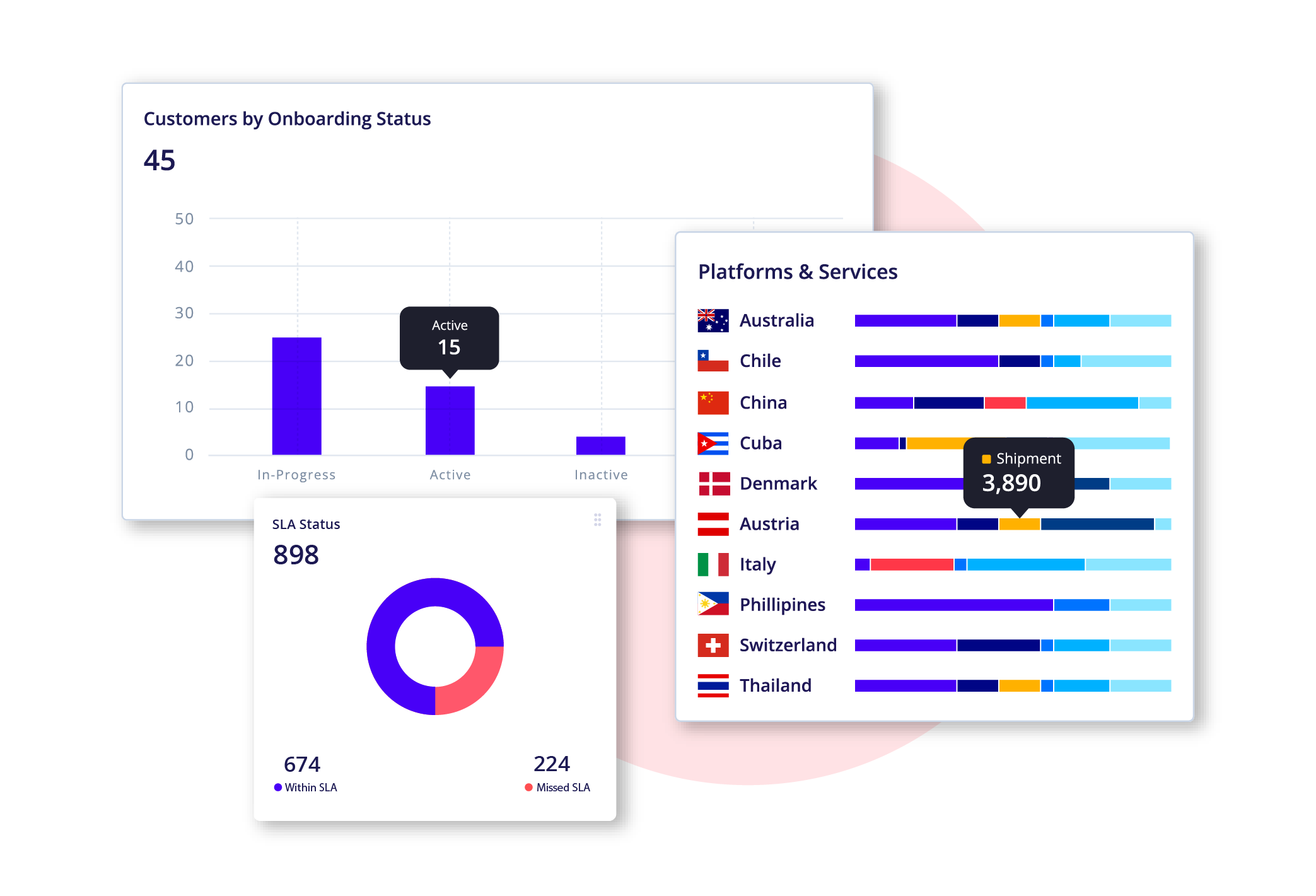
A central platform for 3PLs to monitor customer activity
d. Implement technology that grows with you
If you use legacy systems or in-house technology to manage your warehouses and inventory, it’s time to replace them with cloud-based technology from a SaaS provider. These systems are maintained and updated regularly by the provider. They can expand based on your growing needs and offer a wide range of platform and technology integrations for you to choose from.
With cloud-based SaaS technology, you can implement what you need when you need it, especially marketplace integrations that your clients desire. This speeds up the client onboarding process and ensures seamless connectivity.
SaaS technology providers also manage the enhancement of their systems and the introduction of new features beneficial to your business. That way, your focus remains on what you do – supporting the fulfillment needs of brands.
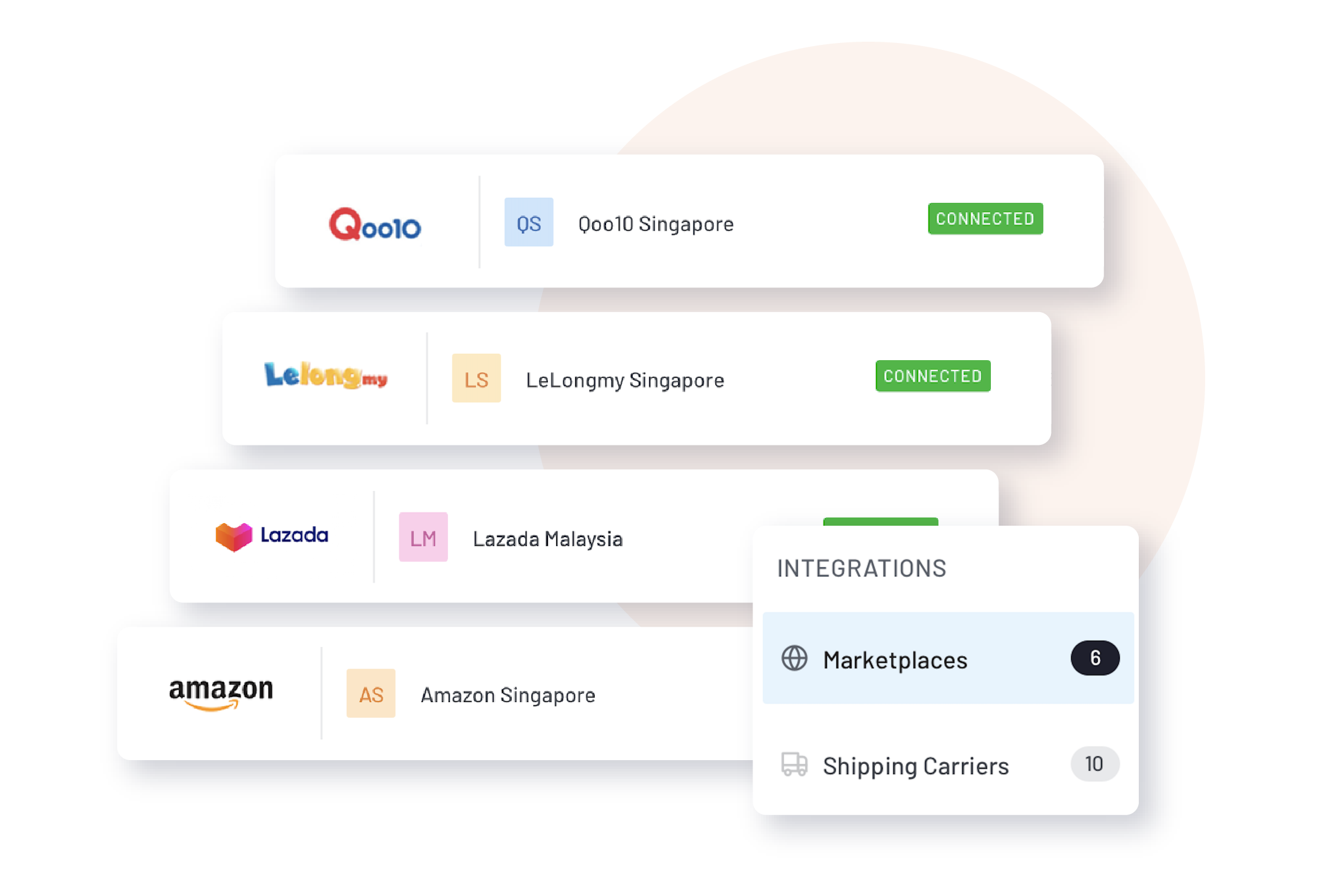
Pre-built integrations with your e-commerce ecosystem
e. Implement smart rules for better order routing
To enhance order routing efficiency and speed, take the time to implement an intelligent warehouse management system that provides accurate inventory visibility across your warehouses. The system should also help you set rules that optimize the fulfillment process.
For example, if you have multiple warehouses, you should be able to implement rules where the warehouse closest to the delivery location, the one with the highest inventory, or one with the cheapest route to the consumer initiates the fulfillment process. And, if the warehouse is out of stock, you should be able to initiate the delivery process through the next best warehouse based on your criteria.
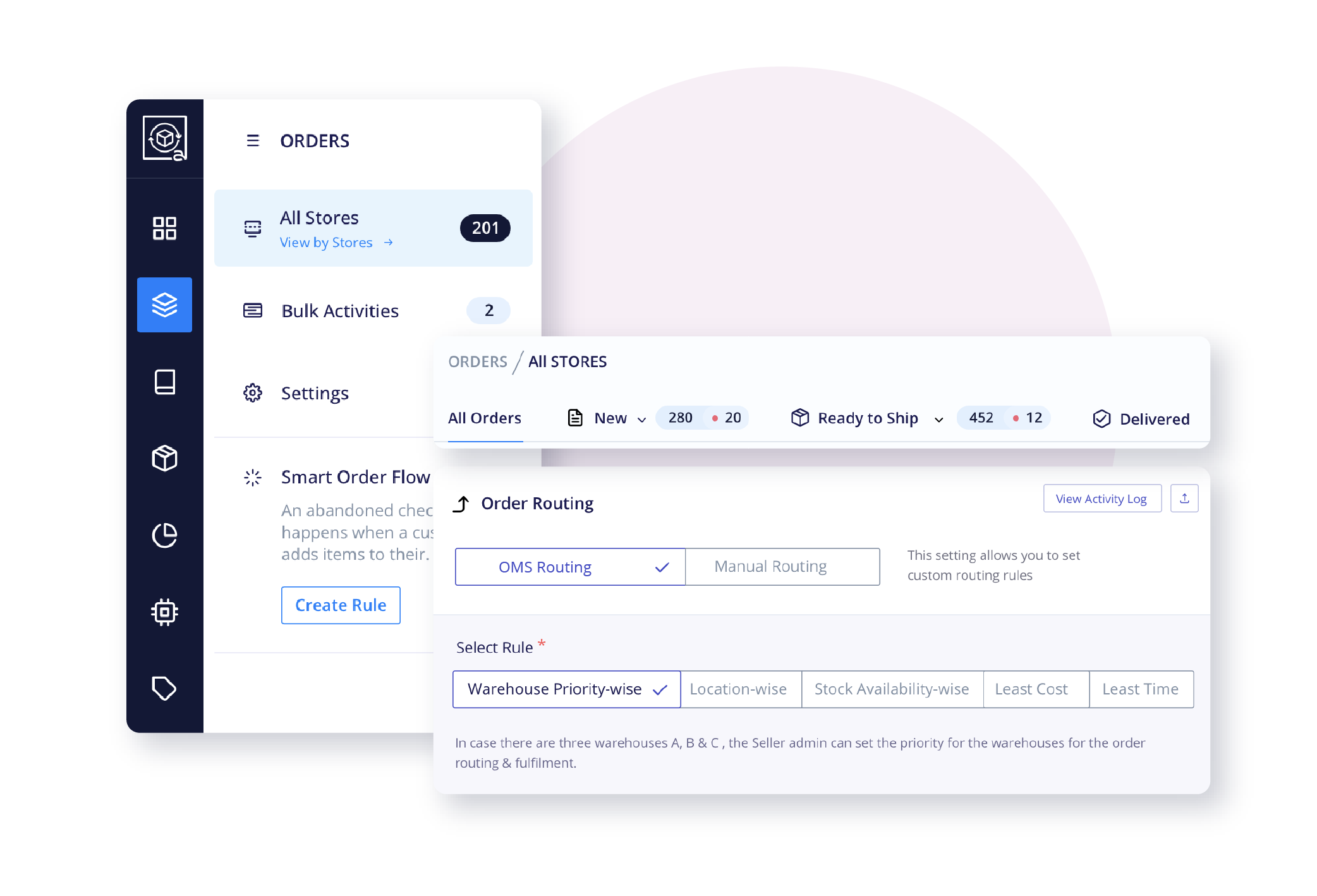
Fulfill orders across warehouses through smart order routing capabilities
6. Conclusion
Global e-commerce logistics is headed for significant growth, but it is only possible through digitalization. Failure to embrace this shift has its consequences. So, digitalization is not merely a choice. It is a vital step for survival and prosperity in the ever-evolving logistics landscape.
By acknowledging your challenges, investing in cloud-based technology, and prioritizing customer-centric solutions, you can meet the changing demands and position yourself for success in the e-commerce logistics industry.
Going digital certainly has benefits, but it is not a switch you can make overnight. Like all important things, it takes planning. So be sure to understand what is stalling your business growth and identify the ideal solutions to solve this. Also, consider what your clients really want. Operations visibility is a mandate. But is there anything else you can provide to enhance their experience and their shopper’s experiences? Perhaps better means to manage their KPIs, business expansion, and omnichannel logistics?
Reach out to our e-commerce logistics experts for answers to these questions!
